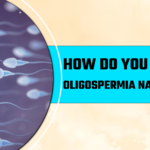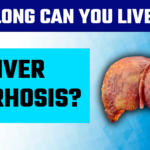Vitiligo Diagnosis: A Comprehensive Guide
Are you observing the formation of white patches or spots on your skin? Only after doing a little research on the internet will you come to know that these can be symptoms of vitiligo. To get a confirmation regarding this, you may need to get some diagnostic tests done. These tests include certain blood tests, skin biopsy, and a few physical examinations.
Vitiligo is one of the most prevalent autoimmune skin diseases. It affects approximately 1 % of people (~ 70 million) worldwide. The appearance of white patches on various areas of the body characterises the disease. These patches commonly appear on areas like the face, arms, neck, and legs.
However, white patches on skin can appear for other reasons, too, like Vitamin B12 and folic acid deficiency, some injury, calcium deficiency, etc. A dermatologist will examine symptoms and medical history and recommend some diagnostic tests to ensure that these patches are developing due to vitiligo.
Today, through this blog, we want to tell our readers about vitiligo, its symptoms and its diagnosis. We will also discuss the effective treatment for this disease. Keep reading to find out more.
Early-stage vitiligo symptoms
The condition can develop the following symptoms at its early stages;
- Development of white patches on the skin.
- It can be accompanied by whitening or greying of the hairs, eyelashes, or facial hairs.
- It can also develop in areas like the inside lining of the nose and vitiligo on lips.
- The condition can also cause changes in your eye colour.
Depending on the appearance of white patches, the disease can be divided into the following types;
- Generalised vitiligo: Almost 98 % of people with this condition have generalised vitiligo. It appears symmetrically on both sides of the body, such as the face and hands.
- Segmental vitiligo: This type usually starts at a very young age. It occurs on one side of the body without crossing the midline, and it affects a single segment, such as the white spots on legs, arm, or face.
- Mixed vitiligo: Individuals of this kind may have both symmetrical depigmented patches indicative of non-segmental vitiligo and unilateral patches diagnostic of segmental vitiligo.
- Focal vitiligo: In this type, white marks on skin can form randomly and do not always follow a certain distribution pattern or symmetry.
- Trichrome vitiligo: It is characterised by regions of pure white (depigmented skin), regularly pigmented skin, and hyperpigmentation (darkened skin).
- Universal vitiligo: It is the most severe type of the disorder, with substantial and widespread depigmentation affecting the majority or all of the body’s skin surface.
So, by checking for these symptoms, you can perform a self-exam to know about your condition. If you are experiencing any of these signs and symptoms, you must consult a doctor. They will advise you on certain diagnostic tests that we will discuss in the next section.
How Is Vitiligo Diagnosed?
When you notice one or more white patches, you have to take a medical consultation. Your family doctor is going to diagnose vitiligo after checking the patches. He is going to make a physical examination to understand the severity of pigment loss. He may ask you questions to learn more about your condition and your genetic predisposition. He can ask you to get the following tests;
-
Physical Examination and Medical History
A healthcare expert will do certain physical examinations and inquire about your medical history and indications. Let them know whether you have a family history of vitiligo or any autoimmune illness. According to a study, one in every five patients with vitiligo has a close relative with this skin condition.
A healthcare practitioner may also inquire whether you have lately experienced skin rashes or attempted treating the afflicted regions at home. It is critical to mention any drugs or lotions you have used at home since these might influence the therapies they recommend.
If you have a very light complexion, it may be difficult to figure out the depigmented spots that result from vitiligo. In certain cases, a dermatologist may use a portable equipment known as a Wood’s lamp to shine ultraviolet (UV) light onto your skin. A patch of skin that is actually depigmented looks different under UV radiation than unaffected skin.
-
Skin Biopsy
One of the common laboratory tests for confirmation of vitiligo diagnosis is a skin biopsy. In this process, a small portion of skin is taken from the affected area and later investigated with a microscope. The doctors observe for any features characteristic of this disease, like the complete absence of melanocytes or cells that create the pigment called melanin.
The absence of these cells confirms the diagnosis of vitiligo. A skin biopsy can also be used to identify vitiligo from other skin conditions that may present with similar symptoms. Although skin biopsies are invasive, they are very accurate and provide a lot of information for therapy management and organisation.
-
Blood test
Blood testing for vitiligo can detect autoimmune markers such as thyroid antibodies and antinuclear antibodies (ANA), which may indicate autoimmune diseases such as lupus or thyroid disorders, which are commonly linked with vitiligo. Blood tests also evaluate vitamin and mineral levels, particularly vitamin D and B12, which are essential for optimal skin pigmentation.
A well-rounded treatment program for each patient can be made by dermatologists depending on the individual needs of a patient, also keeping in mind the results of the blood tests as well as clinical complaints and other diagnoses. This enables them to cure vitiligo and other associated medical disorders.
How effective is homeopathy for vitiligo?
The homeopathic treatment for treatment for white spot on skin inhibits or slows the process of colour loss. It also restores some of the skin’s pigmentation. A homeopathic vitiligo doctor will prescribe a variety of homeopathic medicines and treatments based on the patient’s condition and symptoms. These homeopathic medicines for vitiligo work by increasing the body’s natural production of melanin. Homeopathic treatments have very little to no side effects. This makes them an excellent choice for the treatment of vitiligo.
Bharat Homeopathy – Offering Homeopathic treatment of white patches on skin
With a commitment to excellence and a comprehensive procedure for healing, Bharat Homeopathy provides a unique and personalised vitiligo disease treatment experience that sets it apart. Treatment with us is appropriate for those seeking healing and recovery from a variety of diseases. With a proven track record, Bharat Homeopathy is quickly establishing itself as a prominent hospital. We strive to give the best care possible by conducting a thorough study of each patient’s disease symptoms and associated difficulties. Our team does proper planning and significant investigation. We also follow up with them on a regular basis. They provide patients with healthier food regimens and side-effect-free vitiligo homeopathic treatment, and they begin to see results quickly. Patients who complete this treatment and follow the given instructions correctly can return to their normal daily routines in a healthy state.


